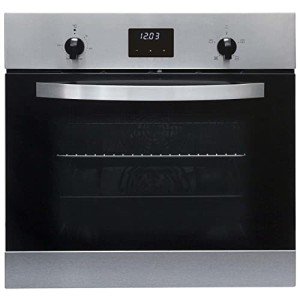The Essential Guide to Oven Hobs: Selecting the Right One for Your Kitchen
When it concerns home cooking, few home appliances are as important as the oven hob. This versatile piece of devices is important for a variety of cooking methods-- boiling, frying, simmering, and sautéing. Provided the myriad of alternatives offered on the marketplace, selecting the ideal oven hob for one's kitchen can be daunting. ovensandhobs.uk intends to offer an in-depth take a look at oven hobs, discussing their types, performances, advantages, drawbacks, and crucial factors to consider when buying one.
Comprehending Oven Hobs
Oven hobs, typically referred to as cooktops, are flat cooking platforms that include burners or heating aspects. They can be integrated with an oven or stand-alone. The choice of an oven hob can considerably impact cooking effectiveness and benefit.
Types of Oven Hobs
Oven hobs come in different types, each with distinct features. Below are the most common types readily available:
| Type | Description | Benefits | Drawbacks |
|---|---|---|---|
| Gas Hobs | Uses natural gas or gas | Instantaneous heat and accurate temperature control; works well with all pots and pans | Requires a gas connection; less energy-efficient than electric |
| Electric Hobs | Use electric coils or convected heat | Easy to clean; consistent heat circulation | Slower to warm up; can be less responsive than gas |
| Induction Hobs | Makes use of magnetic fields to heat pots and pans directly | Quick cooking; energy-efficient; simple to tidy | Requires suitable pots and pans; typically more costly |
| Ceramic Hobs | Flat glass-ceramic surface area with convected heat | Visually pleasing; easy to clean | Can be prone to scratching; slower to heat than induction |
Secret Features of Oven Hobs
When picking an oven hob, several functions should be considered:
- Size & & Configuration: Available in different sizes, oven hobs can accommodate multiple pots and pans. Standard options are usually 30, 36, or 48 inches wide.
- Power Output: Look for hobs with differing power levels for different cooking procedures. High-powered burners are exceptional for boiling, while lower-power ones can be utilized for simmering.
- Control Types: Choose between knob controls and touch controls. Knobs provide tactile feedback, while touch controls provide streamlined styles and additional performances.
- Safety Features: Options like automated shut-off, child locks, and flame failure gadgets are important for preventing accidents.
- Relieve of Cleaning: Choose models with smooth surfaces or removable parts for easy upkeep.
Benefits and Disadvantages
Comprehending the pros and cons of different oven hobs can assist in making a notified choice.
Benefits
- Flexibility: Suitable for various cooking techniques, from boiling to frying.
- Speed: Many hobs heat rapidly, specifically induction designs.
- Energy Efficiency: Some choices, like induction hobs, can lower energy consumption compared to standard methods.
Downsides
- Cost: High-end models, especially induction hobs, can be expensive.
- Installation: Gas hobs need expert setup and a gas supply, which may incur additional expenses.
- Compatibility: Not all pots and pans deals with induction hobs, necessitating extra purchases.
Purchasing Considerations
When picking an oven hob, think about the following aspects:
- Cooking Style: Assess how typically and what sort of cooking you do to determine the best hob type.
- Kitchen Layout: Measure your kitchen area to ensure the hob fits and matches other appliances.
- Budget plan: Determine how much you are willing to spend. Consider installation and the cost of any required pots and pans.
- Energy Source: Evaluate the accessibility of natural gas or the electrical capability of your kitchen to decide between gas and electric options.
FAQs About Oven Hobs
Q1: What is the distinction in between a cooktop and an oven hob?A cooktop and an oven hob normally refer to the exact same home appliance. However,"cooktop "is a more comprehensive term that consists of both standalone hobs and integrated units with ovens. Q2: Can I utilize any pots and pans on an induction
hob?No, induction hobs require ferrous( magnetic)pots and pans
to work. Pots and pans made from material like stainless steel or cast iron appropriates, while aluminum and copper without magnetic homes are not. Q3: How do I tidy my oven hob properly?Cleaning techniques depend on the kind of hob.
Usually, a wet cloth and moderate detergent work for glass-ceramic surfaces, while a particular hob cleaner is perfect for induction. Gas hobs require disassembling burners for comprehensive cleaning. Q4: Are induction hobs safe for cooking?Yes, induction hobs are generally more secure than gas hobs as they do not produce an open flame,and the surface area cools off quickly. Many designs likewise feature child safety locks. Q5: How typically ought to I replace my oven hob?The life expectancy of an oven hob differs based on the type and use. Generally, they last around 10 to 15 years.
Routine maintenance can assist extend this duration. Choosing the best oven hob for your home can greatly improve your cooking experience. With a comprehensive understanding of the types, features, advantages, and considerations, anybody can make an educated option. From the high heat of gas to the effectiveness of induction, there is a hob fit to every cooking need. Eventually, the ideal oven hob can transform cooking from a mundane job into an art form, making it possible for culinary enthusiasts to create scrumptious meals with ease.

